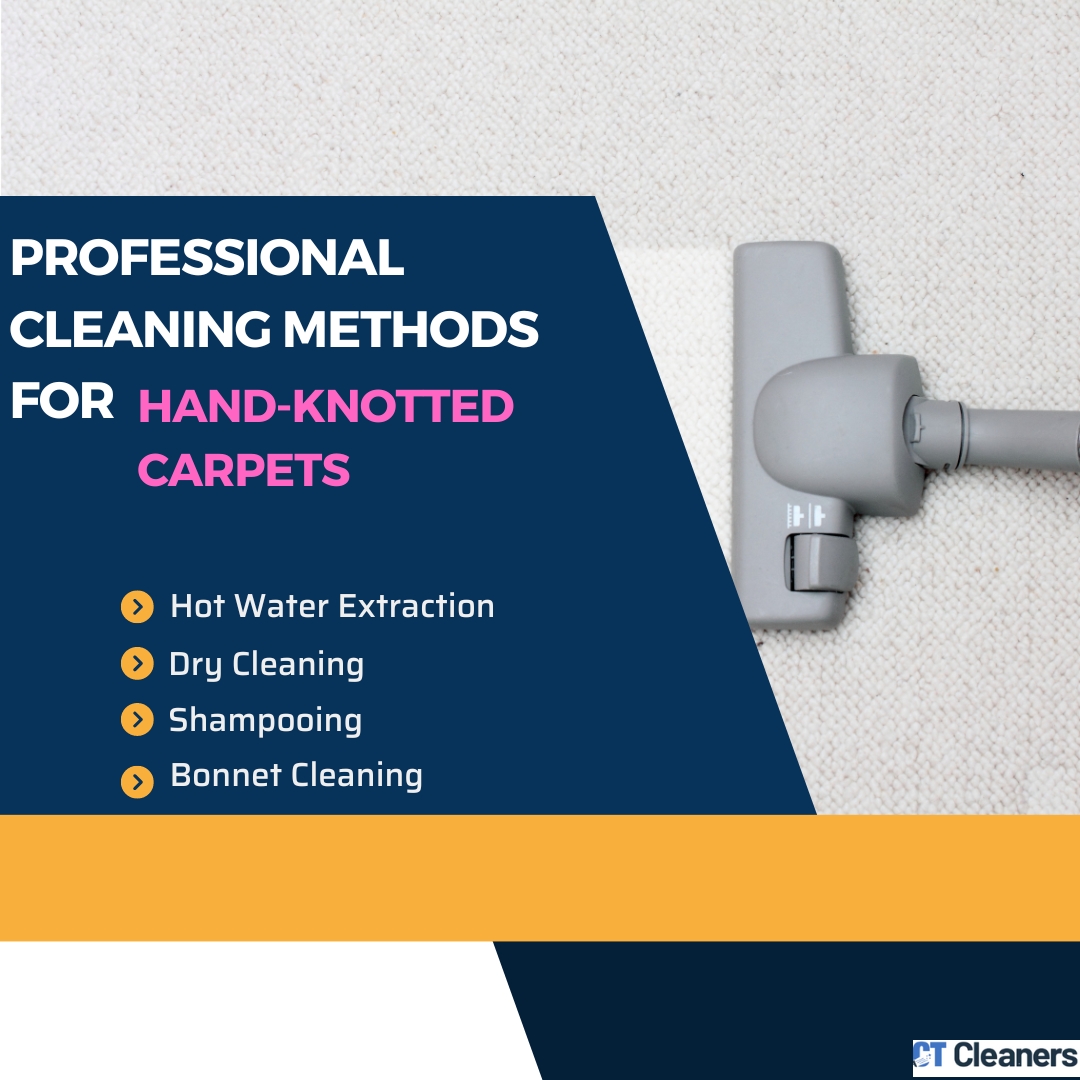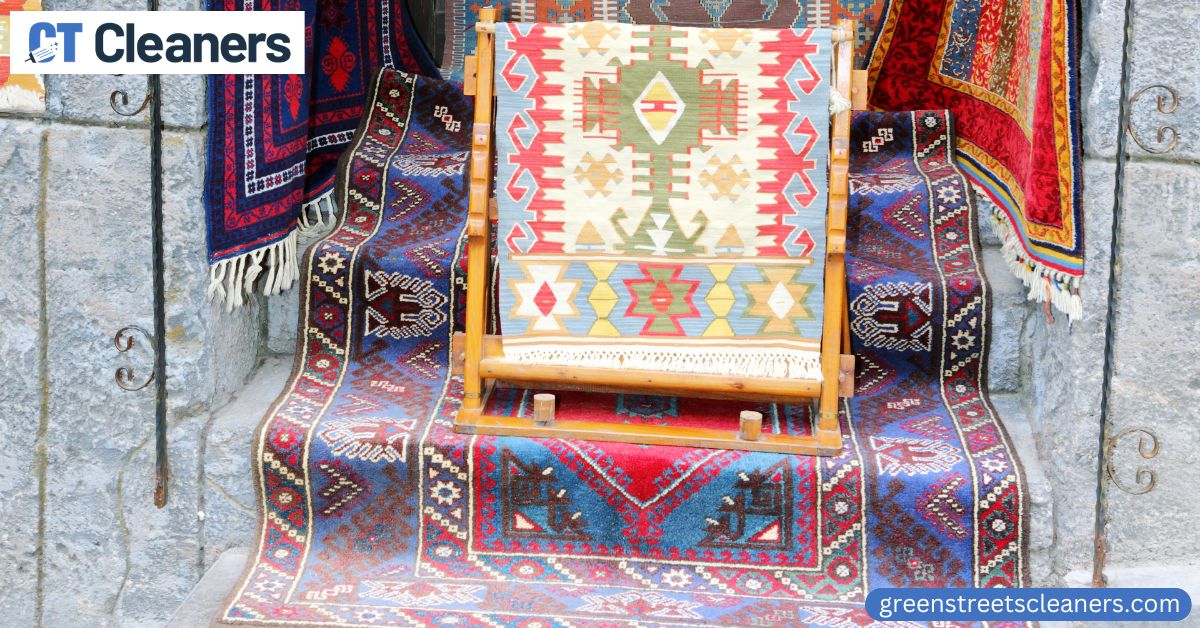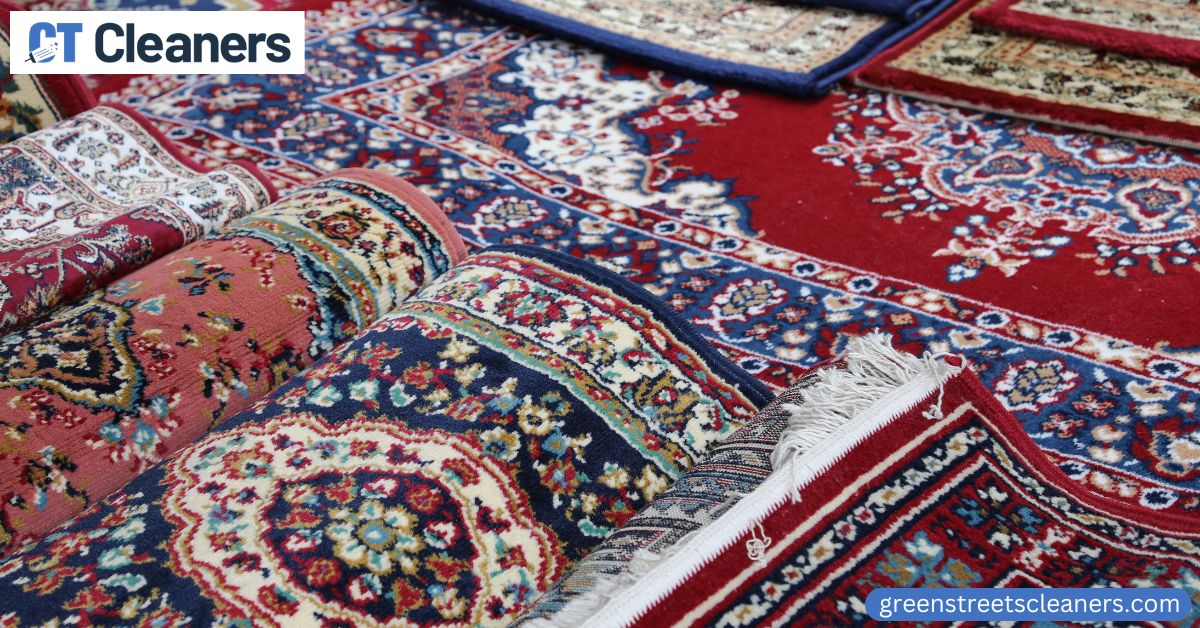Welcome to our blog on hand-knotted carpets cleaning! Hand-knotted rugs and carpets are a beautiful addition to any home, but they require special care when it comes to cleaning. In this blog, we will be discussing the tips and techniques for keeping your hand-knotted rug or carpet looking its best for years to come. We’ll cover topics such as the best methods to use, how often you should clean your rug, which products are safe and effective for cleaning, and more. So stay tuned for all the information you need to keep your hand-knotted carpet in top condition!

Importance of Cleaning Hand-Knotted Carpets
Hand-knotted carpets are luxurious and beautiful floor coverings that can add elegance and style to any room. However, just like any other floor covering, hand-knotted carpets need to be properly cleaned and maintained in order to preserve their appearance and extend their lifespan. Cleaning hand-knotted carpets are important for a variety of reasons, including health, appearance, and durability.
- Health: Dust, dirt, and allergens can easily accumulate in hand-knotted carpets over time, creating a breeding ground for bacteria and allergens. Regular cleaning of hand-knotted carpets can help remove these harmful substances and improve the air quality in your home.
- Appearance: Dirt and stains can easily detract from the beauty of hand-knotted carpets, making them look dull and unsightly. Regular cleaning can help to restore vibrant colors and patterns, keeping your hand-knotted carpets looking like new.
- Durability: Proper cleaning and maintenance of hand-knotted carpets can help to extend their lifespan. Dirt and other particles can cause wear and tear on the fibers, leading to premature fading and fraying. Regular cleaning can help to remove these particles and prevent damage, ensuring that your hand-knotted carpets look great for years to come.
Cleaning hand-knotted carpets are essential for maintaining their appearance, improving air quality, and preserving their longevity. By taking the time to properly clean and maintain these luxurious floor coverings, you can enjoy their beauty and comfort for years to come.
Characteristics of Hand-Knotted Carpets
Hand-knotted carpets are a type of floor covering that is renowned for their beauty, durability, and longevity. These carpets are crafted using traditional techniques and are made from high-quality materials, making them a popular choice for homeowners who value quality and craftsmanship. In this section, we will explore the key characteristics of hand-knotted carpets that make them so special.
- Materials: Hand-knotted carpets are typically made from natural fibers such as wool, silk, and cotton, which are renowned for their durability and luxurious feel.
- Weaving Technique: Hand-knotted carpets are crafted using a unique weaving technique that involves knotting individual fibers onto the carpet backing. This technique results in a dense and sturdy carpet that can last for many years.
- Durability and Longevity: Hand-knotted carpets are made to last, with many carpets surviving for several decades or even centuries with proper care and maintenance.
- Unique Designs: Hand-knotted carpets are available in a wide range of designs, from traditional patterns to contemporary styles, allowing homeowners to choose a carpet that perfectly matches their personal style.
- Quality: Hand-knotted carpets are made using traditional techniques and high-quality materials, making them a symbol of quality and craftsmanship.
Hand-knotted carpets are an exceptional type of floor covering that offers a range of benefits for homeowners. From their durability and longevity to their unique designs and quality materials, hand-knotted carpets are a timeless investment that can add beauty and comfort to any home. Whether you are looking to renovate your living room or add a touch of elegance to your bedroom, hand-knotted carpets are an excellent choice that is sure to impress.
Tips for Cleaning Hand-Knotted Carpets
Hand-knotted carpets are a luxurious and beautiful addition to any home. However, over time, dirt, dust, and spills can build up, leaving them looking dull and dirty. Regular cleaning and maintenance are essential to keep your hand-knotted carpets looking as good as new.
| Tip | Explanation |
|---|---|
| Vacuum regularly | Regular vacuuming helps to remove dirt and dust that can accumulate in the fibers. |
| Blot spills immediately | Quick action will help to prevent spills from setting in and becoming more difficult to clean. |
| Use a mild detergent for spot cleaning | Avoid harsh chemicals and bleach, as these can damage the fibers and cause discoloration. |
| Avoid using chemicals or bleach | A mild detergent is the best choice for spot cleaning. |
| Professional cleaning | Professional cleaning is recommended every 1-2 years to keep your hand-knotted carpets looking their best. |
By following these tips, you can keep your hand-knotted carpets looking beautiful and luxurious for many years to come. Regular cleaning and maintenance will help to preserve the quality and appearance of your carpets, so they continue to bring joy and comfort to your home.
Professional Cleaning Methods for Hand-Knotted Carpets
Professional cleaning is an essential part of maintaining the beauty and longevity of hand-knotted carpets. While regular vacuuming and spot cleaning can help to remove dirt and debris from the surface of the carpet, professional cleaning is needed to deep clean the fibers and remove any accumulated dirt, allergens, and other harmful substances. Here are some of the most common professional cleaning methods for hand-knotted carpets:
- Hot Water Extraction: Also known as steam cleaning, hot water extraction involves the use of hot water and a cleaning solution to penetrate deep into the fibers of the carpet, removing dirt and allergens. This method is highly effective, but it should only be performed by a professional to avoid damaging the carpet.
- Dry Cleaning: Dry cleaning is a gentle and effective method for cleaning hand-knotted carpets. This method uses a dry cleaning powder that is spread over the carpet and then vacuumed up, removing dirt and debris in the process. This method is ideal for delicate or heavily soiled carpets that cannot be wet cleaned.
- Shampooing: Shampooing is a traditional method of cleaning carpets that involves the use of a cleaning solution and a scrub brush to remove dirt and debris from the fibers. This method is not recommended for hand-knotted carpets, as the scrub brush can cause damage to the delicate fibers.
- Bonnet Cleaning: Bonnet cleaning is a low-moisture method of cleaning carpets that involves the use of a cleaning solution and a bonnet (a round piece of fabric) that is attached to a rotating floor machine. The bonnet is soaked with the cleaning solution and then passed over the surface of the carpet, removing dirt and debris in the process. This method is ideal for refreshing the appearance of hand-knotted carpets between professional deep cleanings.
It’s important to note that different types of hand-knotted carpets may require different cleaning methods. Before having your hand-knotted carpet professionally cleaned, it’s important to consult with a carpet cleaning professional to determine the best cleaning method for your particular carpet.
“I was really impressed with your carpet cleaning services. They did an outstanding job!”
-Jill M., Winnipauk
DIY Cleaning Solutions for Hand Knotted Carpets
While professional cleaning is recommended for hand-knotted carpets, there are some simple cleaning solutions you can make at home to help keep your carpet looking its best in between professional cleanings. Here are some DIY cleaning solutions for hand-knotted carpets:
- Vinegar Solution: Mix equal parts water and white vinegar in a spray bottle. Spray the solution onto the carpet and gently blot it with a clean, white cloth. This solution is effective for removing spills and stains, and it will also help to neutralize odors.
- Baking Soda Solution: Sprinkle baking soda over the carpet and let it sit for at least 15 minutes. Vacuum up the baking soda to remove dirt and debris, and neutralize any odors in the process.
- Hydrogen Peroxide Solution: Mix equal parts water and hydrogen peroxide in a spray bottle. Spray the solution onto the carpet and gently blot it with a clean, white cloth. This solution is effective for removing stains, but it should be tested in an inconspicuous area of the carpet before using on a larger area to ensure it doesn’t cause damage.
It’s important to remember that hand-knotted carpets can be delicate, and it’s important to use cleaning solutions that are gentle and won’t damage the fibers. Always test a cleaning solution in an inconspicuous area of the carpet before using it on a larger area, and be sure to blot (rather than rub) any spills or stains to avoid damaging the fibers.
Maintenance and Care for Hand Knotted Carpets
Hand-knotted carpets are a beautiful and valuable addition to any home, but they require proper care and maintenance to keep them looking their best for many years to come. Here are some tips for maintaining and caring for hand-knotted carpets:
- Regular Vacuuming: Regular vacuuming is the most important step in maintaining the appearance of your hand-knotted carpet. Vacuum your carpet at least once a week to remove dirt and debris that can accumulate in the fibers.
- Spot Cleaning: Immediately clean any spills or stains on your hand-knotted carpet to avoid damage and staining. Blot the spill with a clean, white cloth to remove as much of the spill as possible, and then clean the area with a gentle cleaning solution (such as a mixture of water and white vinegar).
- Rotate Your Carpet: Rotating your hand-knotted carpet on a regular basis will help to distribute wear and prevent fading from exposure to sunlight.
- Protect Your Carpet from Direct Sunlight: Direct sunlight can cause fading and damage to hand-knotted carpets, so be sure to keep your carpet away from windows and sources of direct sunlight.
- Professional Cleaning: Have your hand-knotted carpet professionally cleaned at least once a year to remove any accumulated dirt and allergens.
- Avoid Walking on Your Carpet with Sharp Heels: High heels can cause damage to the fibers of your hand-knotted carpet, so it’s best to avoid walking on your carpet with sharp heels.
By following these tips and properly maintaining and caring for your hand-knotted carpet, you can keep it looking beautiful and vibrant for many years to come. Also, if your carpet ever needs repairs, it’s best to call a professional carpet repair service to ensure that the carpet is properly fixed. This will help to preserve the quality and appearance of your carpet for years to come.
In conclusion, hand-knotted carpets are a beautiful and valuable investment for any home. They are made with care and precision, and they offer a unique beauty and warmth that can elevate any space. It’s important to properly care for your hand-knotted carpet to keep it looking its best for many years to come. If you follow the tips in this article and use carpet cleaners that are formulated for hand-knotted carpets, you can ensure that your carpet will stay beautiful for years to come.
Regular vacuuming, spot cleaning, rotating your carpet, protecting it from direct sunlight, professional cleaning, and avoiding sharp heels on your carpet are all important steps in maintaining the beauty and longevity of your hand-knotted carpet. Whether you’re looking to add a touch of elegance to your home or you’re simply looking for a comfortable and warm surface to walk on, hand-knotted carpets are an excellent choice. With proper care and maintenance, you can enjoy your hand-knotted carpet for many years to come.










